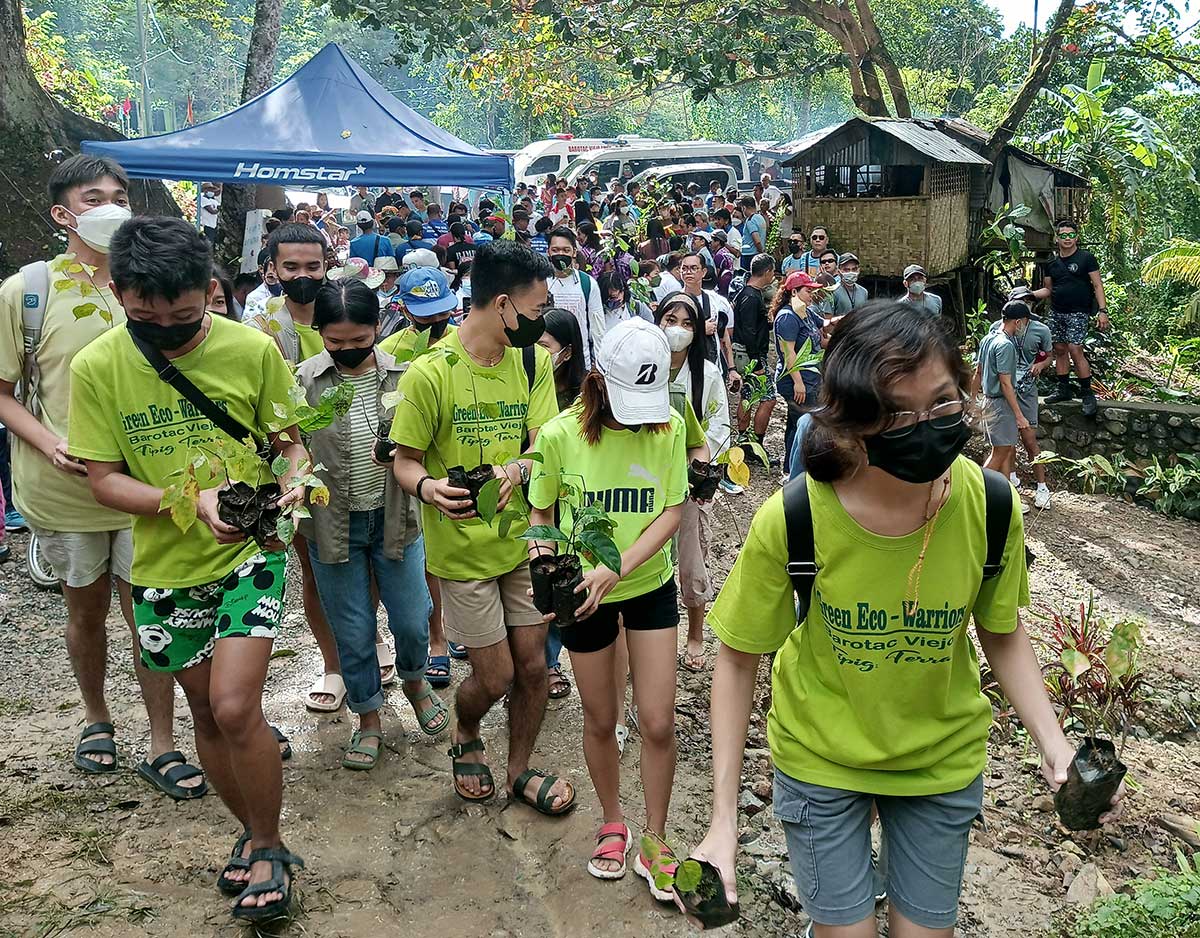
By John Noel E. Herrera
Tree planting has become a vogue amid concerns about climate change and environmental degradation due to human activities.
Every year, governments and private sector groups troop to the mountains to plant trees in an effort to curb global warming and other extreme environmental changes.
Take for example the Iloilo Provincial Government’s 23rd Piyesta sa Kakahuyan last Saturday, Sept 24, 2022, at Sitio Nagpana, Brgy Lipata, Barotac Viejo, Iloilo where over 500 volunteers joined.
Iloilo Governor Arthur Defensor Jr., Vice Governor Christine Garin, Board Member Valentine Serag and Barotac Viejo Mayor Nielo Tupas, together with the volunteers from different organizations, and other provincial and municipal officials were able to plant over 1,000 coffee, cocoa, jackfruit, and Narra seedlings during the event.
But just how much of the trees planted survived through the years?
Iloilo Provincial Environment and Natural Resources Office said that as of 2020, the province recorded a “more or less 50 percent survival rate” of the seedlings planted under the Tanom Iloilo program.
However, there were also some municipalities that recorded an 80 to 90 percent survival rate of trees.
Data from PENRO indicated that in 2020, Batad town recorded a 100 percent survival rate out of the 1,000 seedlings they planted, while New Lucena had 97.02 percent; Leon (83.70 percent), and Barotac Viejo (81.60 percent).
The percentage, however, varies from the number of seedlings planted, as some towns recorded a lower survival rate of trees and had a lower number of seedlings planted also.
The town of Igbaras only recorded a 0.06 percent survival rate of trees out of 100 seedlings planted, while Zarraga had a 0.062 percent survival rate out of 500 seedlings planted, and Janiuay had a 6.40 percent survival rate out of the 1,000 seedlings they planted in 2020.
PENRO also said that they are currently monitoring the data for the 2021 tree planting activity, as the whole province targeted to plant 1.5 million trees since 2011, with a standard survival rate of 80 percent.
The low survival rate of trees in some municipalities and schools were also due to the COVID-19 pandemic, typhoons and other extreme weather conditions that hit the province.
PENRO added that there are nurseries in every district to augment the seedlings requirement of the program partners “to make sure that there will be a source of planting materials for the re-planting to come up with higher survival.
“We need to intensify the monitoring of trees planted and promotion of local indigenous forest and fruit trees seedlings pra adaptable sa area. Need guid ang care and maintenance ka mga seedlings planted for higher survival,” PENRO added in.
Over 500 volunteers joined the Iloilo Provincial Government’s 23rd Piyesta sa Kakahuyan on Saturday, Sept 24, 2022 at Sitio Nagpana, Brgy Lipata, Barotac Viejo, Iloilo.
The tree planting and growing activity under the Tanum Iloilo program of the provincial government aimed to promote Sloping Agricultural Land Technology, and to protect the environment for a more sustainable community.
“We are focusing on the Sloping Agricultural Land Technology para ma proteksyunan naton ang aton nga mga bukid. Ang panghangkat nga ara sa aton atubangan subong is that basta importante sige dugang naton sang mga beneficiaries sang aton Integrated Social Forestry Program,” Defensor said during the program.
Tupas said that environmental programs are important to build a more sustainable community and for the security of the next generation.
Meanwhile, the IP (indigenous people) community in the area said that the event will help promote their place to grow as an eco-tourism destination in Northern Iloilo.
Gregorio Elosendo, chieftain of the Nagpana Minority Association (NAMIAS) thanked the provincial government and the Barotac Viejo LGU for creating projects to improve their lives, as they promised to protect and take good care of the seedlings.
Garin also emphasized that what the volunteers were doing was “noble” as she hoped that the trees they planted would grow.
“Hindi ta ni makita ang ang gin puslan sang gina ubra ta subong, but makita ini sang future generation. Kabay papa subong naga tanom kita, pero ang importante nga magdalagko man ang gin tanom ta as this is not just tree planting, but importantly, growing” she said.


















